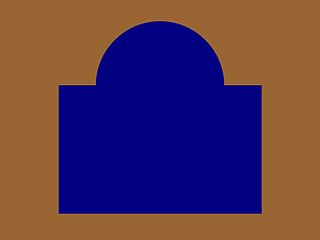The 13th Battalion (Royal Highlanders of Canada) of the Canadian Expeditionary Force was an active service battalion during the First World War.

The 31st Battalion (Alberta), CEF, was an infantry battalion of the Canadian Expeditionary Force during the Great War. The battalion recruited in Alberta and was mobilized at Calgary. The battalion was authorized in November 1914 and embarked for Britain on 17 May 1915. On 18 September 1915 it disembarked in France, where it fought with the 6th Infantry Brigade, 2nd Canadian Division in France and Flanders until the end of the war. The battalion was disbanded in August 1920.

The 2nd Battalion, Canadian Expeditionary Force was an infantry battalion of the Canadian Army created in response to outbreak of the First World War in August 1914. The battalion comprised local militia in many regions of Ontario. Men came from as far away as Sault Ste. Marie to join in Canada's military endeavour. Local militia gathered at Valcartier, in August 1914 and became part of the 2nd Battalion.

The 22nd Battalion, CEF, was an infantry battalion of the Canadian Expeditionary Force in the Great War.

The 10th Battalion, Canadian Expeditionary Force was a unit of the First World War Canadian Expeditionary Force (CEF), specifically in the 1st Canadian Division from 1914 to 1919. The battalion participated in every major Canadian battle of the First World War, and set a record for the most decorations earned by a Canadian unit in a single battle at Hill 70. The unit was known to its contemporaries simply as The Fighting Tenth.
The 50th Battalion (Calgary), CEF, was an infantry battalion of the Canadian Expeditionary Force during the Great War. The 50th Battalion was authorized on 7 November 1914 and embarked for Britain on 27 October 1915. The battalion disembarked in France on 11 August 1916, where it fought as part of the 10th Canadian Infantry Brigade, 4th Canadian Division, in France and Flanders until the end of the war. The battalion was disbanded on 30 August 1920.

The 3rd Battalion, Canadian Expeditionary Force was an infantry battalion of the Canadian Expeditionary Force that saw service in the First World War. It was created on 2 September 1914 with recruits from Toronto, primarily from the Queen's Own Rifles of Canada with additional drafts from the 10th Royal Grenadiers and the Governor General's Body Guard.

The 7th Battalion, CEF was a battalion of the Canadian Expeditionary Force that saw service in the First World War.
4th Battalion, CEF was an infantry battalion raised as part of the Canadian Expeditionary Force for service during the First World War. Raised in Canada in September 1914, the battalion sailed to the United Kingdom within weeks of its establishment. After a short period of training it was committed to the fighting on the Western Front, remaining in France and Belgium until the war ended. It returned to Canada in mid-1919 and after its personnel had been demobilized, the battalion was subsequently disbanded in 1920.
The 1st Battalion, Canadian Mounted Rifles, CEF, was an infantry battalion of the Canadian Army. Raised for service during the First World War as part of the Canadian Expeditionary Force (CEF), it was formed in November 1914, in Brandon, Manitoba. Originally a mounted infantry unit named the 1st Regiment, Canadian Mounted Rifles, CEF, which was expanded, following its rerolling and dismounting as an infantry unit, by absorbing other units of the Canadian Mounted Rifles (CMR).

The 5th Battalion, CEF, known as "Tuxford's Dandys," was an infantry battalion of the Canadian Expeditionary Force during the Great War.
The 18th Battalion, CEF, was an infantry battalion of the Canadian Expeditionary Force in the Great War.

The 4th Battalion, Canadian Mounted Rifles was authorized on 7 November 1914 as the 4th Regiment, Canadian Mounted Rifles, CEF and embarked for Britain on 18 July 1915. It disembarked in France on 24 October 1915, where it fought as part of the 2nd Brigade Canadian Mounted Rifles until 31 December 1915, when it was converted to infantry and allocated to the 8th Canadian Infantry Brigade, 3rd Canadian Division. The regiment was redesignated the 4th Battalion, Canadian Mounted Rifles, CEF on 1 January 1916 and was disbanded on 6 November 1920.

The 25th Battalion, CEF was a unit in the Canadian Expeditionary Force during the Great War. It was the second infantry battalion of ten to be raised in Nova Scotia during the war. The 25th served in Belgium and France as part of the 5th Canadian Brigade, 2nd Canadian Division from 16 September 1915 until the end of the war. Regimental headquarters were established at the Halifax Armouries, with recruitment offices in Sydney, Amherst, New Glasgow, Truro and Yarmouth. Of the 1000 Nova Scotians that started with the battalion, after the first year of fighting, 100 were left in the battalion, while 900 men were killed, taken prisoner, missing or injured.

The 28th Battalion (Northwest), CEF was an infantry battalion of the Canadian Expeditionary Force during the Great War.

The 8th Battalion, CEF, also known by the nickname of The Little Black Devils of Canada, was an infantry battalion of the Canadian Expeditionary Force during the Great War. The battalion was authorized on 10 August 1914 and embarked for Great Britain on 1 October 1914. It disembarked in France on 13 February 1915, where it fought as part of the 2nd Canadian Brigade, 1st Canadian Division in France and Flanders until the end of the war. The battalion was disbanded on 15 September 1920.

The 46th Battalion, CEF, was an infantry battalion of the Canadian Expeditionary Force during the Great War.

The 47th Battalion, CEF, was an infantry battalion of the Canadian Expeditionary Force during the Great War.

The 49th Battalion, CEF, was an infantry battalion of the Canadian Expeditionary Force during the Great War.
The 15th Battalion, CEF was an infantry battalion of the Canadian Expeditionary Force during the Great War. The 15th Battalion was authorized on 1 September 1914, embarked for Britain on 26 September 1914 and arrived in France on 15 February 1915. The battalion fought as part of the 3rd Canadian Brigade, 1st Canadian Division in France and Flanders throughout the war. The battalion was disbanded on 30 August 1920.














